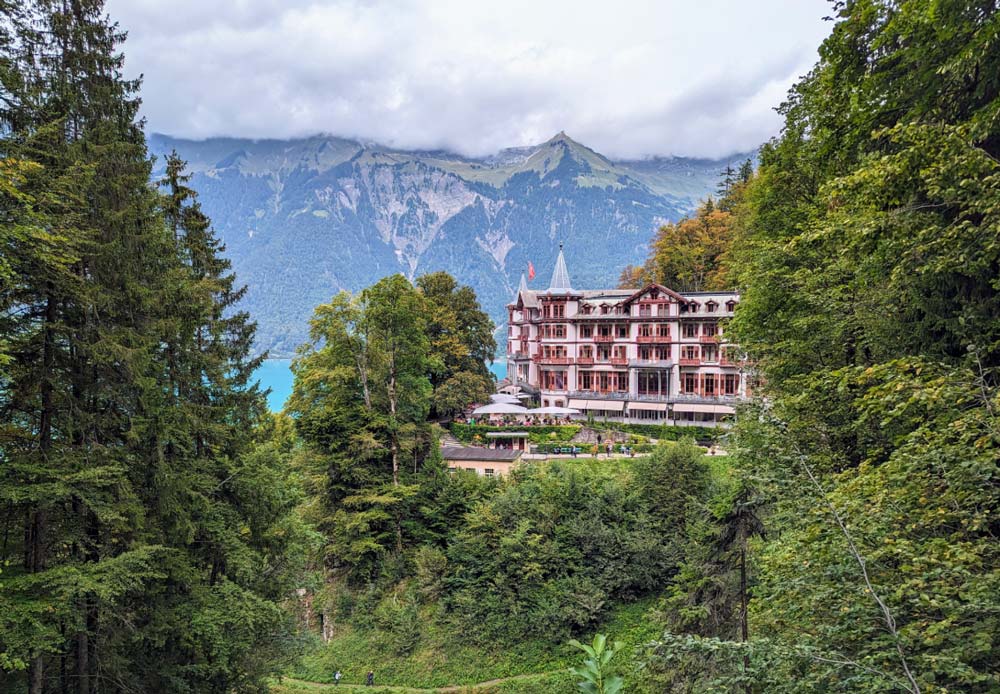Switzerland, a landlocked gem in the heart of Europe, is celebrated for its postcard-perfect Alpine landscapes, serene lakes, and charming cities that blend medieval architecture with modern sophistication. Renowned for its cultural diversity and efficient public transport system, Switzerland offers a seamless travel experience that caters to adventurers, nature lovers, and history enthusiasts alike. Whether you’re drawn to lush meadows in summer or powdery ski slopes in winter, this country captivates across all seasons, offering something magical no matter when you visit.
With only three days to explore, a carefully curated itinerary is essential to savor the best of Switzerland. Thanks to its unparalleled transport network, you can visit multiple destinations in a short span while enjoying world-famous scenic train rides. This condensed itinerary takes you on a whirlwind journey through Zurich, Lucerne, the Jungfrau Region, and the majestic Mount Pilatus, ensuring you experience both the urban sophistication and the awe-inspiring natural beauty Switzerland is known for. From exploring Zurich’s vibrant Old Town to ascending to the “Top of Europe” in the Jungfrau Region, every moment promises to be unforgettable. Let’s embark on this enchanting adventure!
Day 1: Exploring Zurich and Lucerne
Morning: Arrival in Zurich
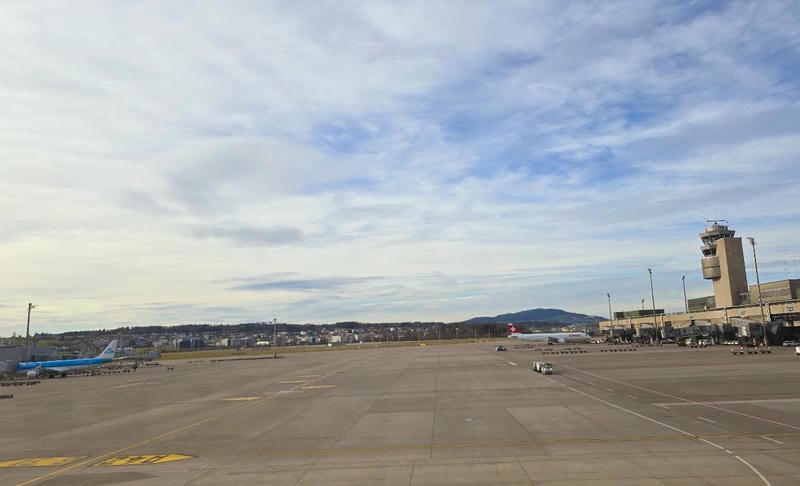
Kick off your Swiss escapade in Zurich, Switzerland’s largest city and a hub of culture, shopping, and history. Begin your day by strolling along Bahnhofstrasse, one of the world’s most exclusive shopping avenues, lined with luxury boutiques, charming cafes, and vibrant street art. It’s more than just a shopping street – it is a visual delight for travelers keen on experiencing Zurich’s cosmopolitan vibe.
Next, immerse yourself in the medieval charm of Zurich’s Altstadt (Old Town), which is peppered with narrow, cobblestone streets, historic buildings, and quaint eateries. For breathtaking views of the city, make your way to Lindenhof Hill, a serene spot perfect for soaking in Zurich’s blend of old-world and modern beauty.
Navigating Zurich is a breeze thanks to its highly efficient public transport system. With trams, buses, and trains operating like clockwork, you’ll have no trouble exploring the city like a local.
Afternoon: Scenic Train Ride to Lucerne
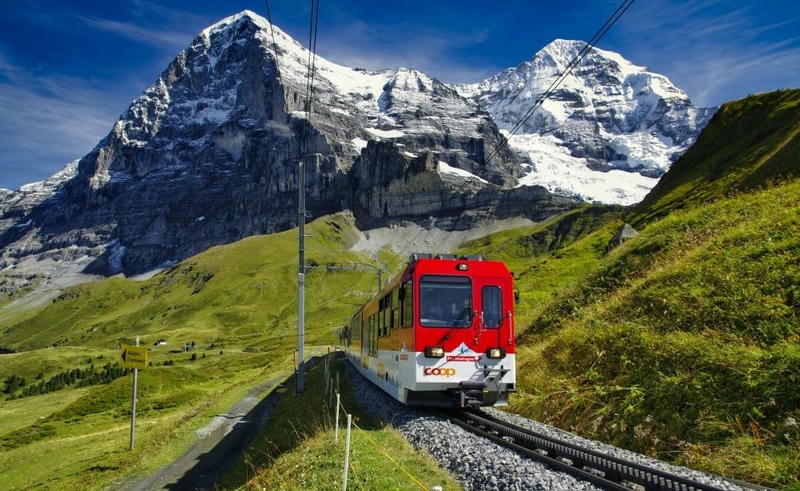
Bid farewell to Zurich and embark on a scenic one-hour train journey to Lucerne, a picturesque city nestled amid snow-capped mountains and a sparkling lake. Switzerland’s train rides are more than just transportation; they’re experiences in their own right, offering panoramic views of rolling hills, shimmering lakes, and the iconic Alps.
Upon arrival in Lucerne, wander through its Old Town, famous for its frescoed buildings, colorful squares, and medieval ambiance. The Chapel Bridge (Kapellbrücke), a 14th-century covered wooden bridge, is a must-see landmark adorned with historic paintings. Nearby, the Lion Monument honors Swiss Guards who perished during the French Revolution – a poignant and beautifully carved tribute.
Evening: Lake Lucerne’s Serenity
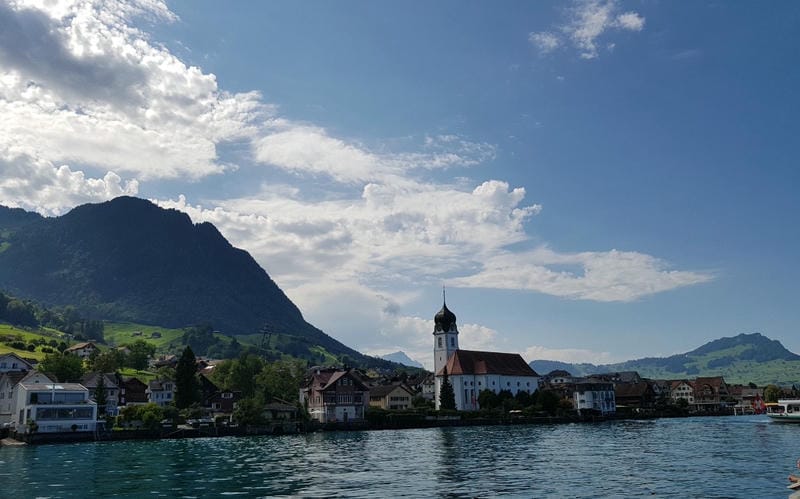
As the sun sets, head to Lake Lucerne for an enchanting evening by the water. A boat ride on the lake is a quintessential Swiss experience and is free with the Swiss Travel Pass. The serene waters framed by towering mountains create a dreamlike atmosphere perfect for unwinding after an active day.
For dinner, opt for a lakeside restaurant or a relaxing dinner cruise to enjoy Swiss cuisine with a side of spectacular views. From hearty fondue to delectable rösti, Lucerne’s culinary offerings are as delightful as its scenery.
Day 2: Adventure in Interlaken and the Jungfrau Region
Morning: Journey to Interlaken
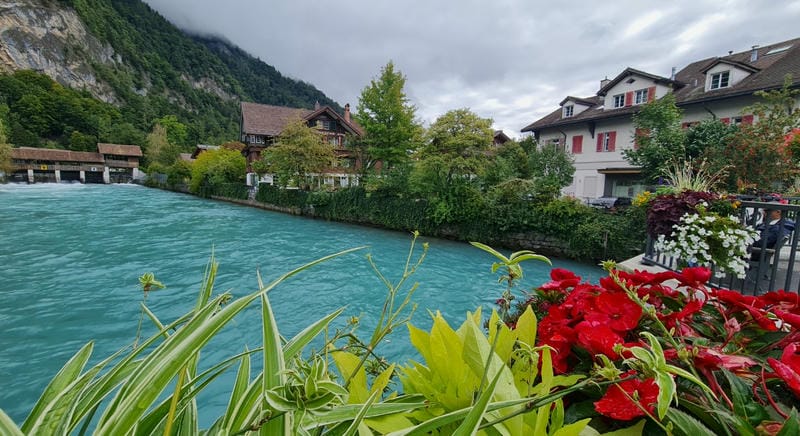
Start your second day with a two-hour train ride from Lucerne to Interlaken, a charming town nestled between Lake Thun and Lake Brienz. Often referred to as the adventure capital of Switzerland, Interlaken is a haven for adrenaline junkies and nature enthusiasts alike. With the majestic Eiger, Mönch, and Jungfrau peaks as its backdrop, the town offers a perfect blend of scenic beauty and thrilling activities.
Midday: Jungfrau Region Excursion
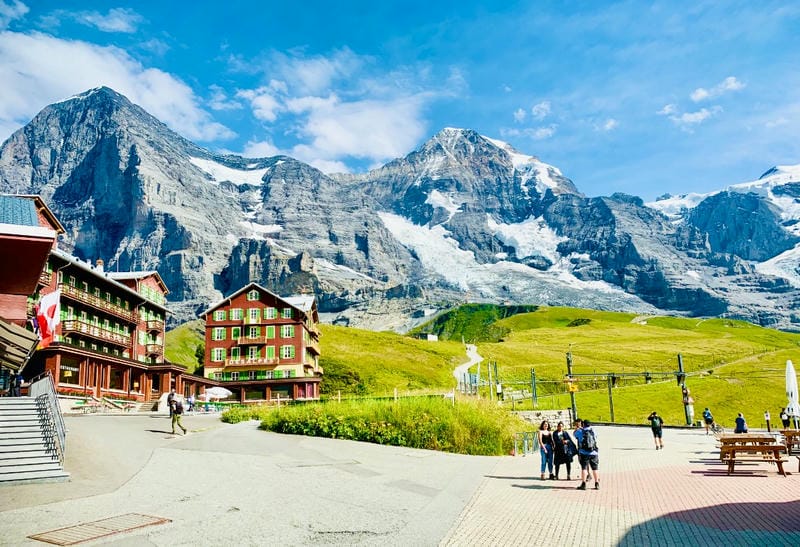
The Jungfrau Region is the crown jewel of Switzerland’s Alps, offering a plethora of activities to choose from. One of the most iconic experiences is the Jungfraujoch train ride to the “Top of Europe.” This remarkable journey takes you to the continent’s highest train station, where highlights include the Ice Palace, showcasing intricate frozen sculptures, and the Sphinx Observatory, with its unrivaled panoramic views of the Aletsch Glacier and beyond.
Alternatively, outdoor enthusiasts can head to Grindelwald First for hiking and adventure sports like ziplining. Another option is the Lauterbrunnen Valley, home to 72 waterfalls, including the majestic Staubbach Falls and the subterranean Trümmelbach Falls. Each of these locations offers a unique glimpse into the raw beauty of Switzerland’s Alpine landscapes.
Afternoon: Explore Lauterbrunnen Valley
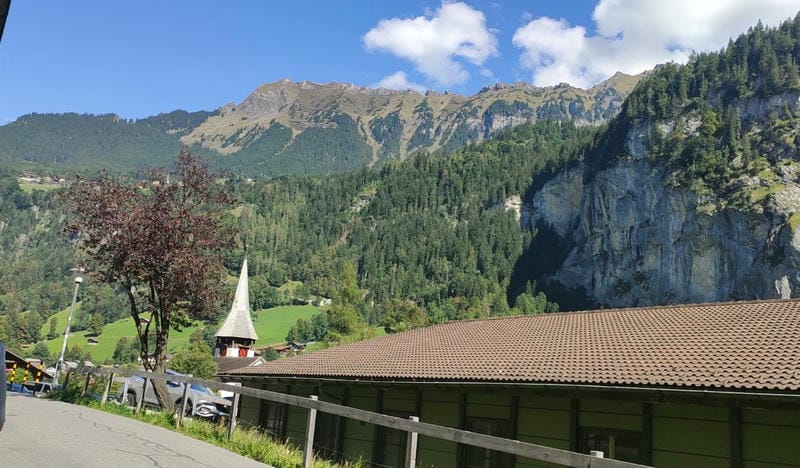
Spend the afternoon exploring car-free Alpine villages like Wengen or Mürren, accessible via cable cars or trains. These idyllic villages boast traditional Swiss chalets, verdant meadows, and awe-inspiring views of the surrounding peaks. If you’re in the mood for a hike, consider the Männlichen to Kleine Scheidegg trail, which delivers breathtaking vistas at every turn.
Evening: Return to Interlaken
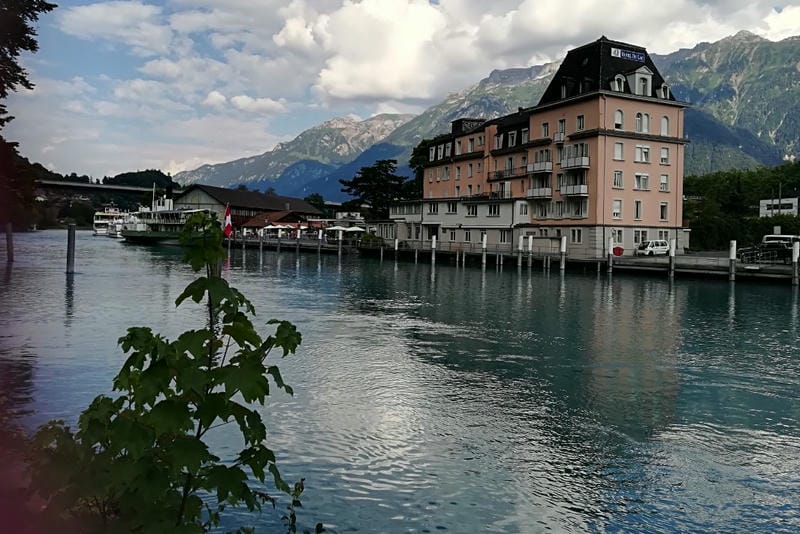
Return to Interlaken in the evening and take a relaxing stroll along the Hoheweg, a promenade lined with shops, restaurants, and gardens. Wrap up your day with a hearty Swiss meal at one of the local restaurants. Savor traditional dishes like cheese fondue or raclette, paired with a glass of crisp Swiss wine.
Day 3: Lucerne’s Mountains and Departure
Morning: Golden Round Trip to Mount Pilatus
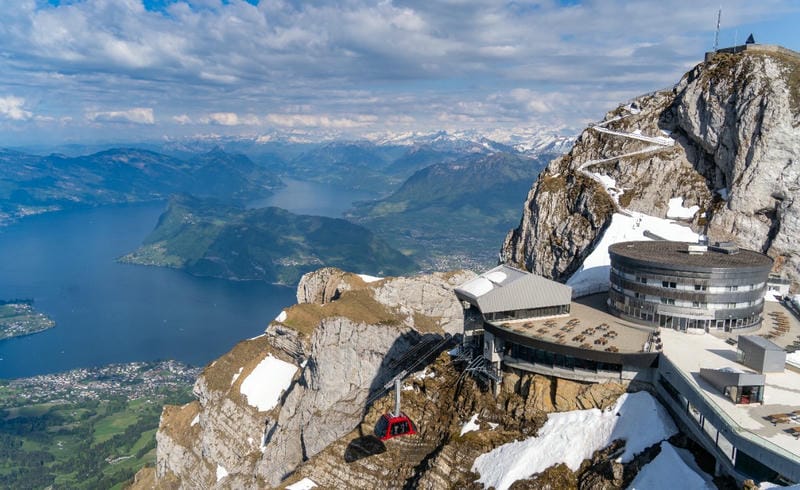
Your third day begins with one of Switzerland’s most iconic excursions – the Golden Round Trip to Mount Pilatus. This unforgettable journey combines various modes of transport to create a perfect circular route. Start with a short bus ride from Lucerne to Kriens, followed by an exhilarating cable car ascent to the summit of Mount Pilatus. As you ascend, the panoramic views of the surrounding Alps and Lucerne’s shimmering lake below are nothing short of breathtaking.
At the summit, explore the Tomlishorn hiking trail, which offers a leisurely (30–50 minutes) walk to awe-inspiring vantage points. Alternatively, visit the observation deck for unparalleled views of the Swiss landscape, stretching as far as the eye can see. Adventure seekers can try alpine amusements like rope parks or ziplining at the Pilatus Kulm area, ensuring there’s something for everyone.
The journey back is equally exciting, as you take the world’s steepest cogwheel railway down to Alpnachstad, passing through lush forests and alpine meadows. For the grand finale, board a boat on Lake Lucerne, which gently carries you back to the city. This harmonious combination of natural beauty and Swiss engineering makes the Golden Round Trip a true highlight of your Swiss getaway.
Midday: Glacier Garden and Old Town Exploration
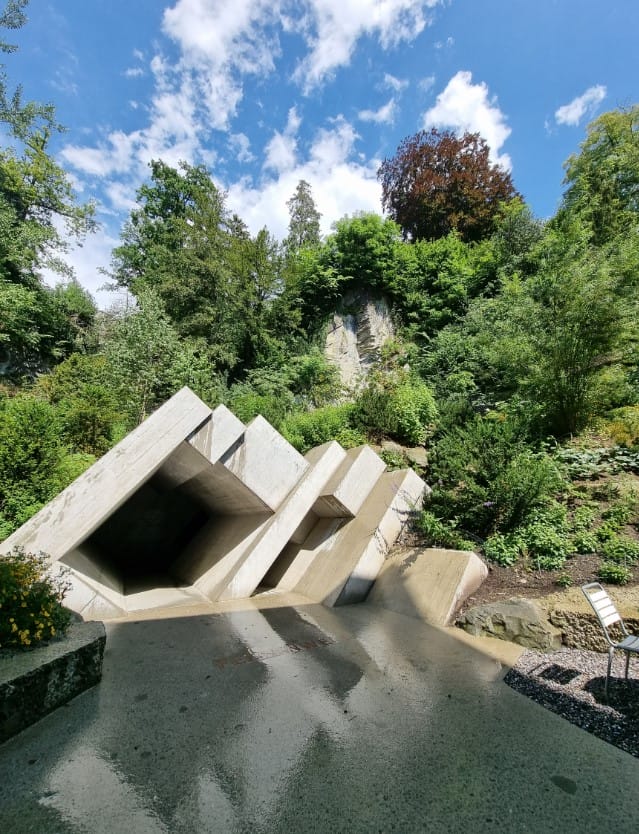
Once back in Lucerne, delve into its history with a visit to the Glacier Garden Museum. This intriguing site showcases glacial potholes, fossils, and remnants of Switzerland’s Ice Age past. It’s an educational yet fascinating stop that provides a fresh perspective on the country’s natural history.
Afterward, take a stroll to Museggmauer, Lucerne’s medieval city walls. These well-preserved fortifications are dotted with towers, some of which are open to the public. Climbing up provides stunning views of the city and the lake, making it a perfect spot for photography enthusiasts or anyone craving a serene moment of reflection.
Continue exploring Lucerne’s Old Town, where frescoed buildings, narrow streets, and cozy cafes beckon. Grab a quick lunch at a local bakery, sampling Swiss specialties like a classic Birchermüesli or a freshly baked pretzel.
Afternoon: Departure and Optional Detour to Rhine Falls
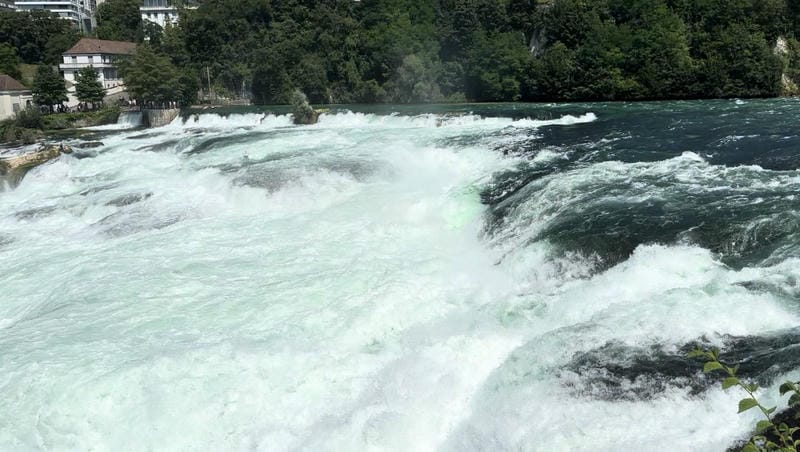
As your Swiss adventure draws to a close, it’s time to make your way to Zurich Airport. The one-hour train journey from Lucerne is not only convenient but also provides one last chance to savor Switzerland’s scenic vistas.
For those with extra time before their flight or departure, consider a detour to the Rhine Falls near Schaffhausen. As Europe’s largest waterfall, the Rhine Falls offer a spectacular sight, especially in the summer when the water flow is at its peak. Take a boat ride to the falls or simply enjoy the serene walking trails in the surrounding area – a perfect way to wrap up your Swiss sojourn.
Additional Tips for Planning Your Trip
Best Time to Visit Switzerland
Switzerland is a year-round destination, with each season offering unique experiences. Summer (June to August) is ideal for hiking and outdoor adventures, while winter (December to February) transforms the country into a skier’s paradise. For fewer crowds and budget-friendly options, consider visiting during the shoulder seasons (April-May or September-October).
Transportation Tips
The Swiss Travel Pass is your best ally for a three-day trip, granting unlimited travel on public transport and significant discounts on mountain excursions. Scenic train routes like the Glacier Express or GoldenPass Line are worth considering if you’re extending your trip. To make the most of your time, plan your travels around the Swiss Railways (SBB) timetable – known for its punctuality and efficiency.
Packing Essentials
Alpine weather can be unpredictable, so pack layered clothing, weatherproof gear, and comfortable walking shoes. Don’t forget a universal power adapter for Swiss outlets and a reusable water bottle, as tap water is drinkable and readily available.
FAQs: Everything You Need to Know
1. What is the best time of year to visit Switzerland?
Switzerland shines year-round, but the “best” season depends on your preferences. Summer is perfect for hiking in regions like the Jungfrau or Zermatt, while winter offers top-tier skiing in destinations such as St. Moritz or Davos. Spring and autumn provide mild weather and fewer crowds, making these ideal seasons for scenic train rides or exploring cities.
2. How much does it cost to spend three days in Switzerland?
Switzerland is known for being pricey, but a well-planned budget can make it manageable. Expect to spend:
- Accommodation: CHF 150-300 per night for mid-range options.
- Transport: CHF 210-300 with a 3-day Swiss Travel Pass.
- Meals: CHF 20-50 per meal at mid-range restaurants.
- Activities: CHF 50-200 depending on excursions like Jungfraujoch or Mount Pilatus.
3. Can I visit multiple cities in three days?
Absolutely. Switzerland’s efficient public transport system allows you to comfortably explore cities like Zurich, Lucerne, and Interlaken within three days. A well-structured itinerary and the Swiss Travel Pass make it easy to maximize your travel time.
4. What are must-see attractions in Switzerland for first-time visitors?
First-time visitors should prioritize landmarks like Chapel Bridge and the Lion Monument in Lucerne, Jungfraujoch (“Top of Europe”), the Lauterbrunnen Valley waterfalls, and Mount Pilatus. If time permits, add Rhine Falls or Zurich’s Old Town for a well-rounded experience.
5. Is the Swiss Travel Pass worth it for three days?
Yes! The Swiss Travel Pass offers free public transport across trains, buses, and boats, as well as discounted or free entry to many attractions, including mountain excursions. For short trips, it ensures convenience and cost savings.
Conclusion
Switzerland, with its blend of natural splendor and efficient infrastructure, is a dream destination for travelers seeking both adventure and serenity. In just three days, you can immerse yourself in the cosmopolitan charm of Zurich, the storybook beauty of Lucerne, and the majestic allure of the Jungfrau Region. From exploring medieval towns to scaling Alpine heights, every moment of this itinerary promises to be an unforgettable experience. Embrace the Swiss way of life, and let yourself be enchanted by its timeless charm – whether it’s your first visit or the first of many.
